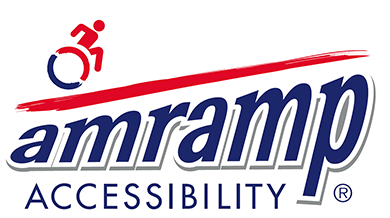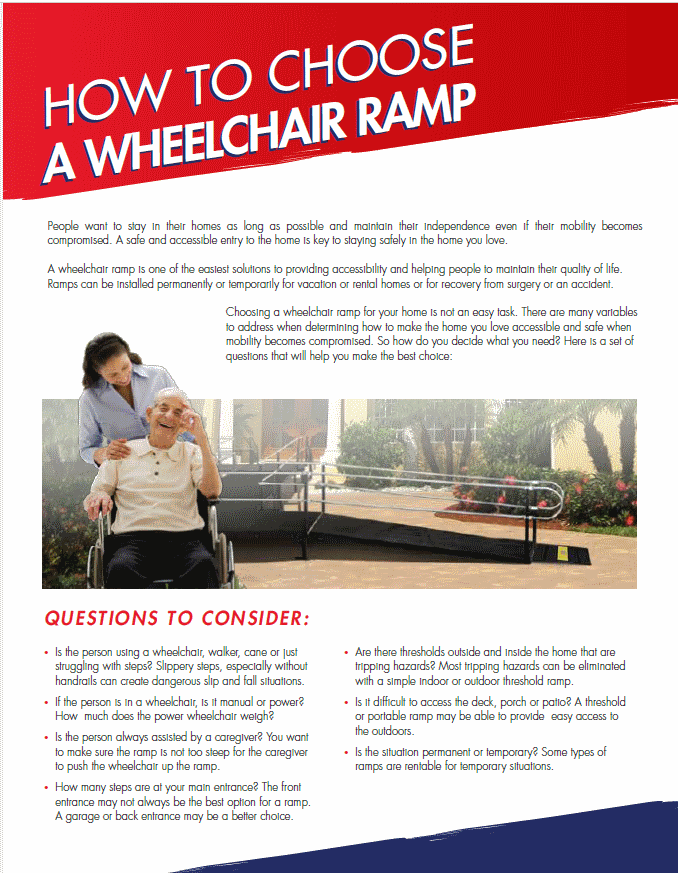Do you know the importance of handrails on wheelchair ramps? Handrails are crucial for people with disabilities, as they can help them feel safe and secure when using a ramp. Handrails also provide a barrier between the wheelchair and the edge of the ramp, preventing anyone from accidentally falling off the ramp. If you’re unsure whether or not your ramp needs handrails, please read on to learn more about their importance and how to ensure that your ramp meets all requirements set by the Americans with Disabilities Act (ADA).
Are Handrails required on a wheelchair ramp?
Handrails are not always a mandatory requirement on ramps, however, they are important in promoting safety and stability, and should be installed by the ramp installer. If you have an ADA ramp, the handrails must meet certain ADA requirements depending on the rise. They should also be of a specific width to allow for safe and comfortable wheelchair access. If you’re unsure whether a wheelchair ramp needs handrails, contact your local municipality for guidance.
The importance of handrails on wheelchair ramps
Handrails are an important safety feature on accessibility ramps, and should be present. They can help prevent falls, promote stability, and allow people with manual wheelchairs or other mobility aids to help push or pull themselves as they move along the ramp. At the top or bottom of the ramp, people often use the handrails to help transfer themselves onto the ramp as well. People who require mobility aids should always use handrails when ascending or descending a ramp. If handrails aren’t available, users should use a secure grip, or ask for help from a caregiver. Ramps that have no handrails are illegal in many places and can pose a serious danger to those using them. So, it’s important to consider installing hand railings on your ramp.
Should my ramp have handrails?
Wheelchair ramps are essential for people with disabilities. They give people accessible routes in and out of homes, businesses, and events, and can help make stairways more navigable for people who need assistance walking or climbing. For maximum safety, even the smallest ramps should have handrails installed. This is because even a small fall can be dangerous for wheelchair users, potentially leading to injury. If you have a ramp already and it does not include handrails, we recommend installing some to keep you and your loved ones safe. Handrails also make it easier for people with mobility issues to get around, and they make the ramp more accessible. To make your ramp more accessible and safe, installing handrails is the best way to go!
ADA compliance
ADA compliance is important for any business, especially those that wish to serve the disability community. This includes installing ramps, which must meet ADA standards regarding maximum slope, handrail requirements, and more. If your ramp has a rise greater than 6 inches, continuous handrails are required on both sides of the ramp. For ramps that have a rise of 6 inches or less, just one continuous handrail is required on one side. Handrails should be 34-38 inches above the surface of the ramp, at a consistent height. Keep in mind that handrails are not just for the disabled – everyone using a wheelchair ramp should be safe and comfortable, no matter their abilities.
Frequently Asked Questions
Which type of wheelchair ramp should I buy for my home?
If you’re looking for a ramp that will suit your needs, then you should definitely consider buying one from Amramp. Not only does our ramp have a non-slip steel, mesh surface, but it also allows elements such as rain, snow, wind, and ice to pass through it. This makes it perfect for use in residential areas where weather conditions can be difficult for people using wheelchairs. Additionally, Amramp offers a modular design that makes it easy to expand or contract as your needs change over time. So whether you’re looking for a single ramp or an entire system, Amramp has you covered!
How long will it take to build a wheelchair ramp at my home?
Building a wheelchair ramp can take anywhere from a few hours to a few days, depending on the size, location, and layout of the ramp. If you choose to install the ramp yourself, be sure to consult with a licensed contractor first. Amramp will then install your ramp for you in just a few hours.
In addition, we’ll be available to you for any questions or concerns about your wheelchair ramp, ensuring that you have all the information you need to make the most informed decision possible.
Do accessibility ramps from Amramp include handrails?
Yes, all ramps from Amramp include handrails. This is to ensure that you have the safest option while using our accessibility ramp. For more information regarding the features of our ramp, visit Anatomy of a Ramp.
Conclusion
Handrails are an important part of ramps for a number of reasons. Not only do they help to prevent falls, but they also provide a safe and secure environment for people using the ramp. Furthermore, handrails are required by the Americans with Disabilities Act (ADA) and should be installed on all wheelchair ramps. If you are unsure if your ramp needs handrails, please contact a professional installer. Thank you for reading and we hope that this blog has provided you with the information you need to make an informed decision about wheelchair ramps.




